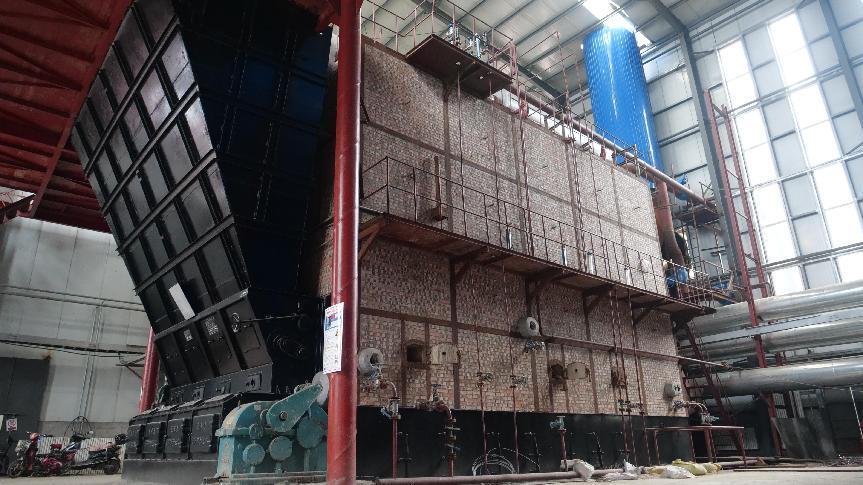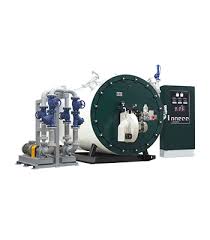
Fev . 06, 2025 03:23 Back to list
biomass fired steam boiler
Efficiently managing a steam boiler requires a firm grasp of its operational dynamics, particularly when it comes to maintaining the correct water level. Neglecting this critical task can lead to inefficiencies or, worse, damage. Here, we deliver a comprehensive guide rooted in seasoned expertise, built on a foundation of reliability and trustworthiness.
4. Assessing the Current Water Level Using the water level gauge, evaluate the existing level. If it is lower than recommended, it is time to add water. Make sure the valves are clearly marked and functioning as intended. 5. Adding Water Open the feed water valve slowly to begin adding water. The process should be gradual to allow the system to adjust. Consider using an automatic water feeder if the setup allows; this maintains consistent water levels, reducing the risk posed by human error. 6. Observing the Reactions Once you add water, monitor the gauge to ensure the level reaches but doesn’t exceed the optimal mark. Also, observe the pressure levels to confirm stability. 7. Restarting the Boiler Once the water level is adjusted, resume operations by gradually turning the boiler back on. Monitor the system as it returns to its regular steam-producing cycle to ensure all parameters are within safe limits. 8. Frequent Checks and Maintenance Implement regular maintenance and inspection routines. Consider integrating automatic controls and alarms for more accessible monitoring of water levels, minimizing manual intervention and error. Expert Tips for Enhanced Boiler Management - Invest in quality water treatment solutions to prevent scale build-up, which impacts heat exchange efficiency. - Familiarize yourself with your boiler’s manual and ensure quick access to it in case of emergencies. - Document all maintenance activities as part of an ongoing strategy to bolster boiler safety and efficiency. Trustworthy Practices from Industry Experts Emphasizing a proactive maintenance mindset preempts potential issues. Engage with certified professionals for periodic inspections and service. Relying on expertise not only extends boiler life but also strengthens operational safety and efficiency. Ultimately, understanding and adhering to these guidelines fosters a safer, more reliable, and effective steam boiler environment, ensuring process longevity and peak performance.


4. Assessing the Current Water Level Using the water level gauge, evaluate the existing level. If it is lower than recommended, it is time to add water. Make sure the valves are clearly marked and functioning as intended. 5. Adding Water Open the feed water valve slowly to begin adding water. The process should be gradual to allow the system to adjust. Consider using an automatic water feeder if the setup allows; this maintains consistent water levels, reducing the risk posed by human error. 6. Observing the Reactions Once you add water, monitor the gauge to ensure the level reaches but doesn’t exceed the optimal mark. Also, observe the pressure levels to confirm stability. 7. Restarting the Boiler Once the water level is adjusted, resume operations by gradually turning the boiler back on. Monitor the system as it returns to its regular steam-producing cycle to ensure all parameters are within safe limits. 8. Frequent Checks and Maintenance Implement regular maintenance and inspection routines. Consider integrating automatic controls and alarms for more accessible monitoring of water levels, minimizing manual intervention and error. Expert Tips for Enhanced Boiler Management - Invest in quality water treatment solutions to prevent scale build-up, which impacts heat exchange efficiency. - Familiarize yourself with your boiler’s manual and ensure quick access to it in case of emergencies. - Document all maintenance activities as part of an ongoing strategy to bolster boiler safety and efficiency. Trustworthy Practices from Industry Experts Emphasizing a proactive maintenance mindset preempts potential issues. Engage with certified professionals for periodic inspections and service. Relying on expertise not only extends boiler life but also strengthens operational safety and efficiency. Ultimately, understanding and adhering to these guidelines fosters a safer, more reliable, and effective steam boiler environment, ensuring process longevity and peak performance.
Share
Latest News
-
Efficient Biomass Fired Hot Water Boiler | AI Heating Solution
NewsAug.01,2025
-
High-Efficiency Gas Thermal Oil Boilers | HPT Models
NewsJul.31,2025
-
Oil Fired Hot Water Boilers Sale - High Efficiency & Affordable
NewsJul.31,2025
-
High-Efficiency Commercial Oil Fired Steam Boiler for Industry
NewsJul.30,2025
-
High-Efficiency Biomass Fired Thermal Oil Boiler Solutions
NewsJul.30,2025
-
High Efficiency Gas Fired Thermal Oil Boiler for Industrial Heating
NewsJul.29,2025
Related PRODUCTS
Copyright © 2025 HEBEI HONGZE BOILER MANUFACTURING CO., LTD. All Rights Reserved. Sitemap | Privacy Policy






















